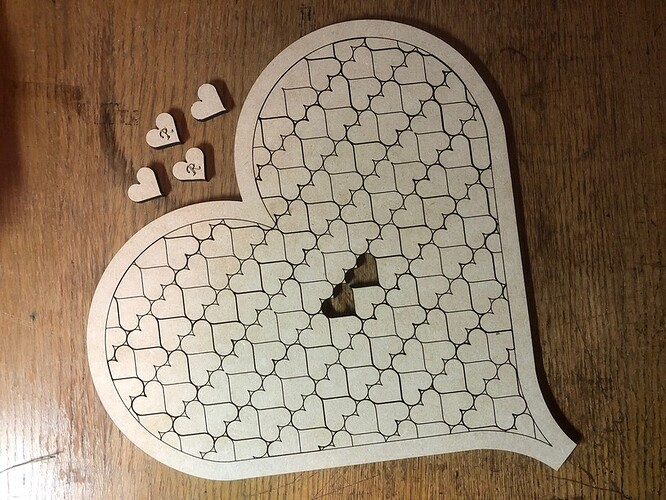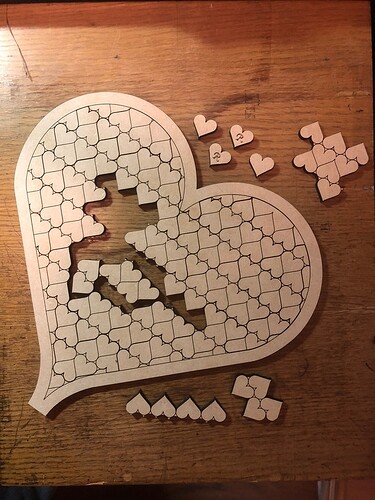Very nice and clever too. Throw on a photo engrave and it will be a keeper for all time.
How nice of you to share—thank you!
Thank you for sharing!!
Thanks! Just ran a print and you are devious 

 Your photo does not do justice to the madness…
Your photo does not do justice to the madness…
Unintended madness, I assure you. My fiancé never finished the puzzle I made her. Too many options. Thanks for trying it out.
Thank you
Great concept an design. I made one for my sweetie but then looking at it. Concluded it would get me in trouble being overly hard to solve. ( i mean that as a compliment)
So, I made a much easier one, that should allow more focus on all the heart shaped stuff and benefits and less time solving the puzzle. Attached should anyone else be interested.
red is score, blue is cut.
added a square frame as well but that is optional .
letters are engraved
Nice design and not too hard to solve that it frustrates her 
Glad to see this design live on, with refinement.
Thanks for the share!
@rpratt, I’m looking to refine my skills in building puzzles like this. Curious: did you build the file in InkScape or some other tool?
Thanks!
I drew it in AutoCAD. I’m an architect and that’s just easier for me.
i took the svg file rpratt shared and tweaked in in inkscape to make the less complicated version.
Thanks @rpratt and @mark14!
I want (one of) my next project to be a more complex version of my Little Puzzle, and the thing that’s daunting me is scaling up the approach I took for creating the cut/score lines that avoids duplicated/overlapping lines.
I built the underlying pattern by hand (in Inkscape) by just duplicating a bunch of hexagons and sticking them together. Good start, but LOADED with overlapping duplicate lines. Tried a bunch of ‘Break Aparts’ and combining and ‘manually removing’ experiments and finally just resorted to putting my original hex-crowd in a lower level and manually creating the grid on top of that with individual lines. Then used that collection to make cut/score decisions for the pieces.
It worked, but it was very manual, and I’m feeling like I’m making this too hard. Any tips for producing a trace of a pattern that results in (divisible) one-pass lines? Does Inkscape (or hey, maybe AutoCAD; I’m game) have some hidden feature that makes this easier? I’m not proud; I’m new at this.
Or is it just supposed to be hard? Which is also fine. 

